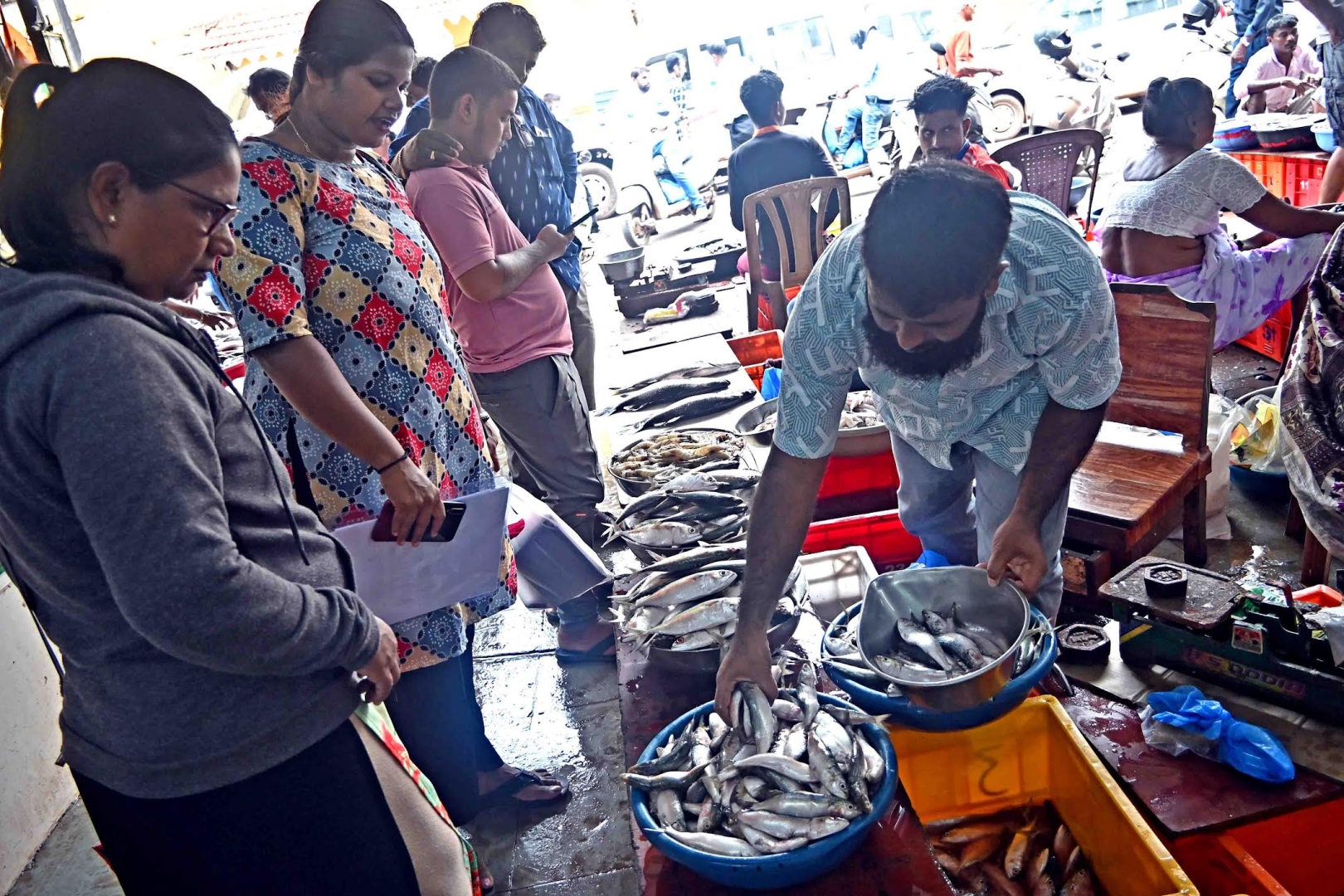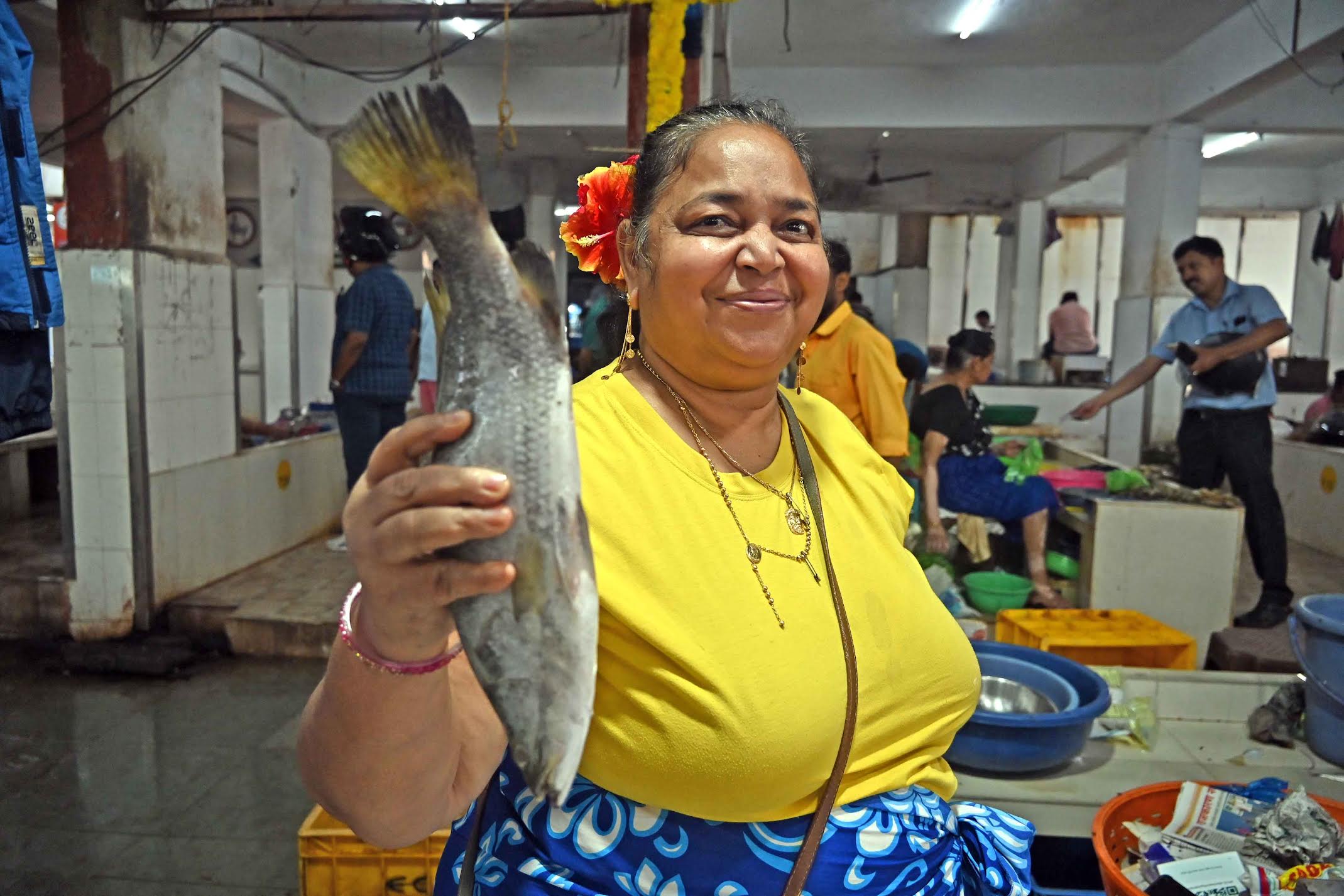Drop in local supply of fresh fish a concern; consumers, vendors rely on imports from neighbouring states


PANAJI
Goa, known for its picturesque beaches, vibrant culture, and delectable cuisine, finds itself in the grip of soaring fish prices following the annual fishing ban and the onset of the monsoon. For Goans, whose staple diet/food consists of rice, curry, and fish, this spike in prices is a significant concern.
Fish is an integral part of Goan cuisine, with nearly 80% of the population consuming it daily. The fishing ban, which begins in the first week of June each year, is intended to conserve marine life during the breeding season. However, it also means that the local supply of fresh fish dwindles, leading to increased reliance on fish imported from neighbouring states like Karnataka (Karwar) and Maharashtra (Malvan).
Albertina Rodrigues, a traditional (local) fish vendor at Panaji market, shares her insights on the current fish market scenario. According to her, the fishing ban has a noticeable impact on prices. “Fish now comes from Karwar and Malvan, but at a higher cost,” she says. “Prices vary depending on the size and type of fish.”
While frozen fish is available at lower prices, many Goans prefer fresh fish, contributing to the high demand and consequently higher prices. Albertina explains that the cost of fish has consistently risen over the years, with this year being particularly steep. “The price of fish is always high, not like the old days,” she remarks. “This year, prices have doubled.”
Several factors contribute to the increased prices of fish during the monsoon season. One main reason is the fish ban and second is transportation costs. Fish from other states incurs additional expenses for transportation and handling, which are passed on to consumers. Additionally, the limited supply of local fish before the ban was also sold at higher prices due to increased demand.
Despite these challenges, fish vendors like Albertina and several others remain dedicated to their trade. She mentions waking up as early as 2:30 to 3 am to collect fresh fish from docks or pickup points. This dedication ensures that the market is stocked, albeit at higher prices.
It was learnt that there is a wide variety of local fish that is available in the market today.
Consumers at the Panaji fish market have mixed feelings about the price hike. Celina Fernandes, a regular buyer, acknowledged the annual nature of the price increase but emphasises the indispensable role of fish in Goan cuisine. “Yes, the fish prices have gone up, but it’s an annual scenario, especially in the monsoon. But we Goans can’t eat food without fish; we need it every day,” she says. “Fish prices have definitely gone very high, but the demand for it will never die.”
The availability of farmed prawns provides some relief to consumers, albeit at a premium price of Rs 600 to 800 per kg. While not as popular as fresh-caught fish, they offer an alternative for those looking to maintain their fish-based diet without the exorbitant cost of other varieties.
As the monsoon progresses, the reliance on imported fish are expected to continue, keeping prices high. The fishing ban, while essential for marine conservation, poses economic challenges for both consumers and vendors. For now, Goans will have to navigate the high prices, adjusting their consumption habits or budgeting accordingly.
While prices have doubled, the unwavering demand for fish speaks of its cultural and dietary significance in Goan life.